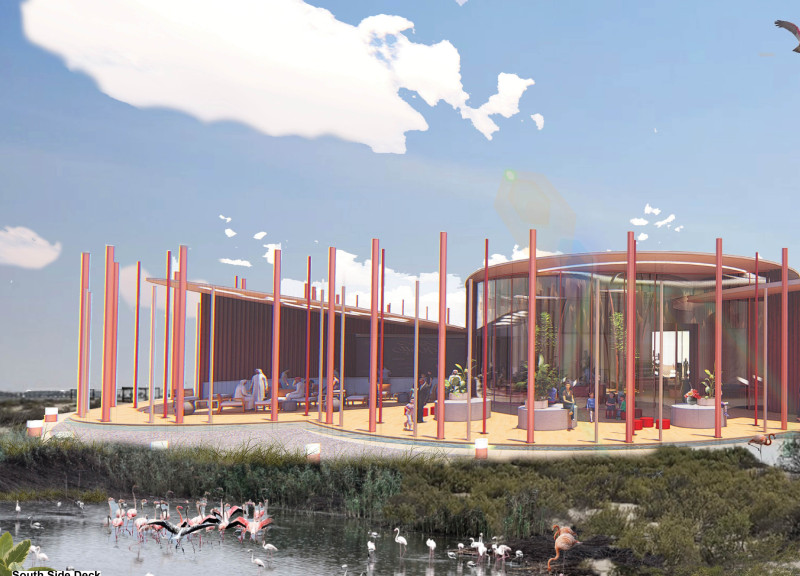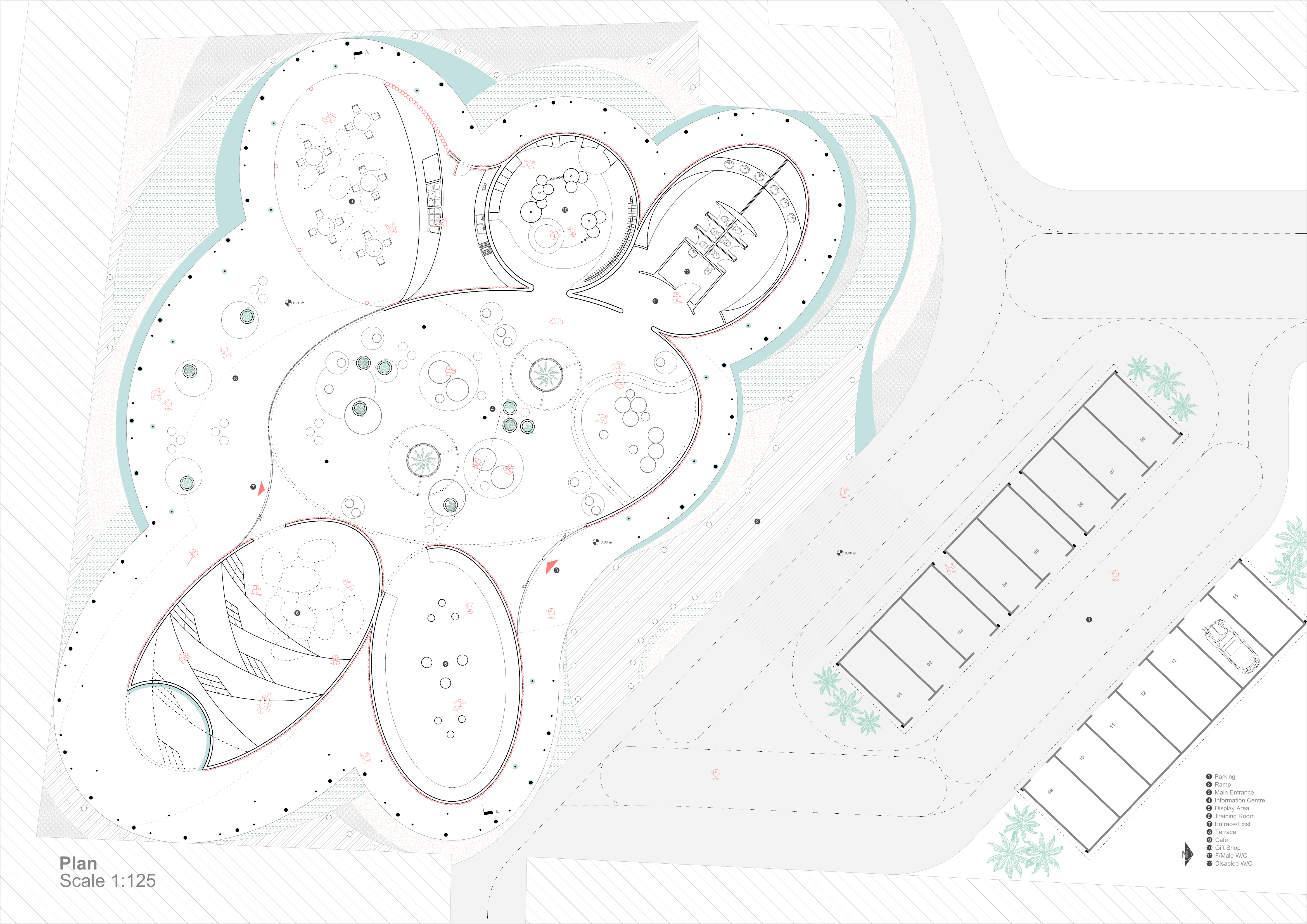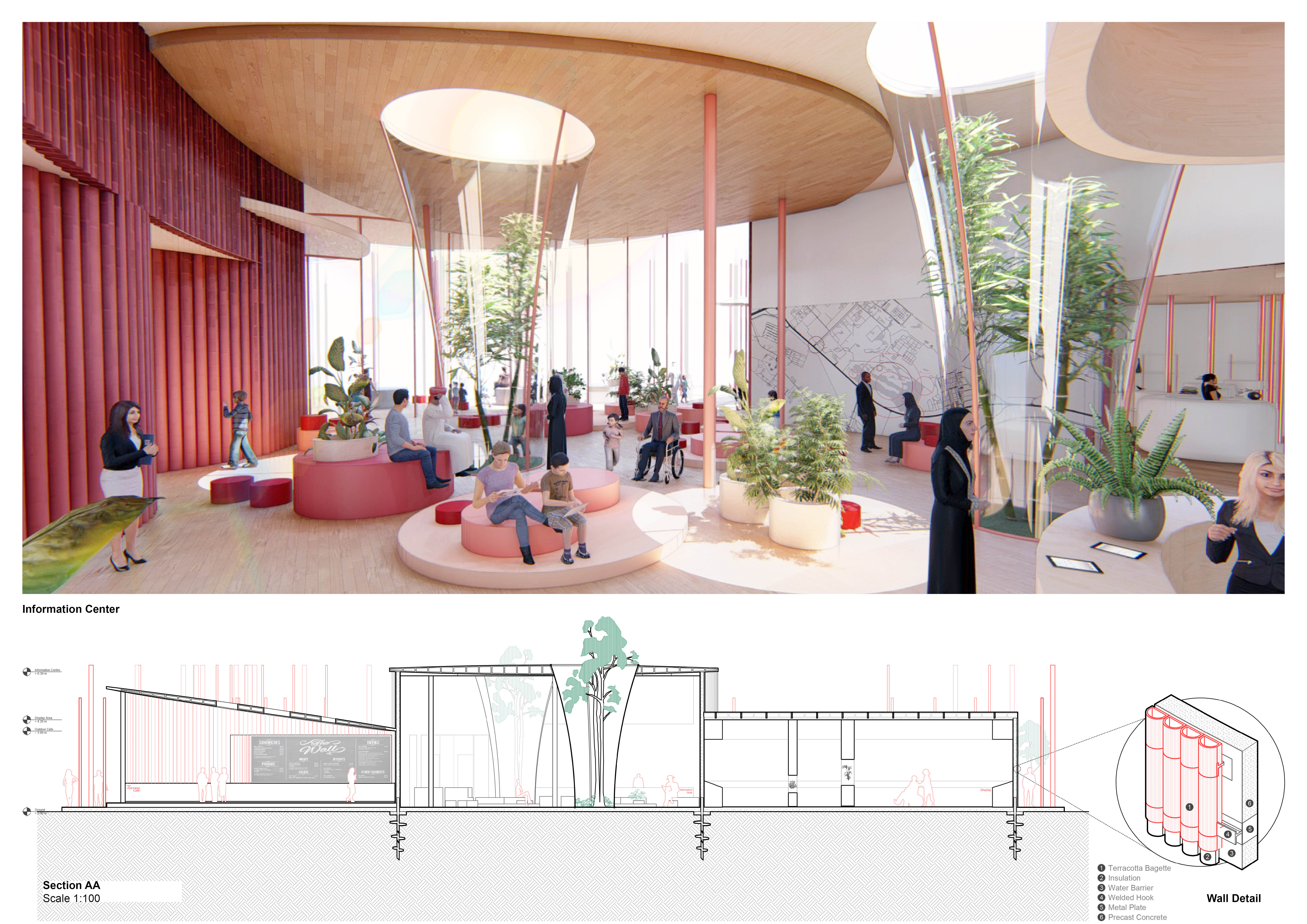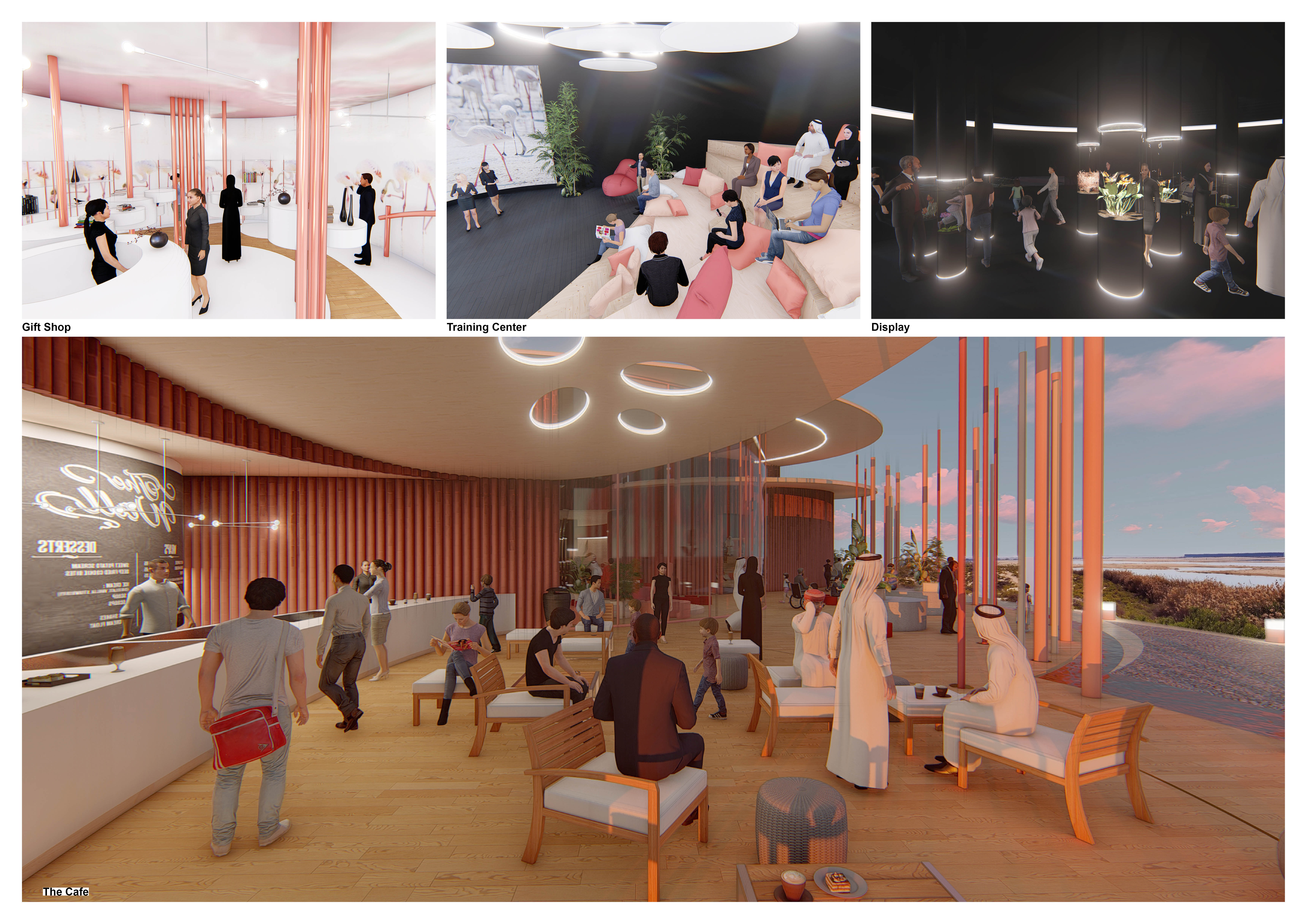5 key facts about this project
Environmental Integration and Sustainable Approach
One of the defining features of the Flamingo Visitor Center is its deep commitment to sustainability. The design utilizes natural materials such as bamboo and sustainably sourced wood, promoting a low carbon footprint. Glass is employed extensively throughout the project, allowing light to penetrate the interior while creating visual connectivity with the exterior. The architecture also incorporates passive cooling strategies that capitalize on the natural climate, reducing reliance on mechanical systems.
The project is organized into well-defined areas that cater to various functionalities. The main entrance is designed to welcome visitors and seamlessly transition them into the space. Within, an information center serves an educational purpose, providing insights into the local flora and fauna as well as the ecological significance of the wetlands. The inclusion of training and workshop facilities adds a dynamic dimension to the center, allowing for community engagement and educational programming.
Unique Design Elements and Community Focus
The design of the Flamingo Visitor Center is characterized by its organic forms that echo the natural landscape. This approach fosters an immersive experience for visitors and reinforces the project's mission to connect them with the wetlands. Outdoor terraces and viewing decks create opportunities to observe the surrounding wildlife, enhancing the educational aspect of the center.
Additionally, the project integrates local cultural references into its architectural language, reflecting the identity of its location while ensuring the structure is functional. The careful consideration of spatial organization promotes both individual reflection and social interaction, making it an adaptable space for various types of visitors.
Architectural Detailing and Material Selection
The detailing of the Flamingo Visitor Center emphasizes durability and aesthetic appeal. Terrazzo flooring is utilized for its resilience, while the use of concrete ensures structural integrity in the face of environmental challenges. Strategic placement of features such as planters and green roofs enhances biodiversity, furthering the sustainability narrative.
In summary, the Flamingo Visitor Center stands as a well-considered architectural project that effectively balances functionality with environmental stewardship. The careful integration of design elements and materials reflects a broader commitment to sustainability and community engagement. Readers interested in exploring specific architectural plans, sections, and ideas are encouraged to review the project presentation for a more comprehensive understanding of its design and objectives.


























